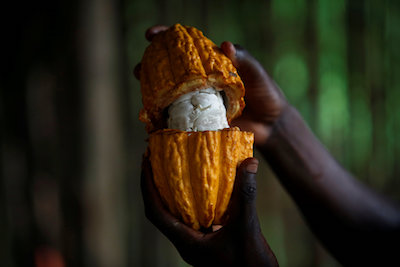As Pope Francis has reminded us, “purchasing is always a moral—and not simply economic—act.” Communities of faith have appropriately been instrumental in making trade and commerce more fair.Efforts to respect the dignity of workers in the apparel industry, for example, include support for Fair Trade certification of brands with sustainable wages and safer working conditions, international monitoring organizations like the Workers Rights Consortium and living-wage apparel factories like Alta Gracia, in the Dominican Republic.
There is another important product that gets far less attention: chocolate. As someone who does research on the environmental impact of purchases and also has an unhealthy chocolate addiction, I am giving up chocolate this Lent, and I will commit to child-labor-free chocolate for the rest of the year to protest the suffering of those who make this product.
I am giving up chocolate this Lent, and I will commit to child-labor-free chocolate for the rest of the year to protest the suffering of those who make this product.
The 2010 documentary “The Dark Side of Chocolate” shows how children from African nations are enticed to Ghana and the Ivory Coast to work in cocoa production but, once there, receive brutal treatment. While progress has been made since the documentary’s release, only 12 percent of cocoa farmers today earn the $2.50 per day necessary for a living income. Because farm incomes are so low, farmers cannot afford to pay much to their workers, which has made child labor difficult to eradicate.

Much of the public remains unaware of child labor in cocoa farming, which involves spraying pesticides, cutting cocoa pods off tree stems with a machete and hauling bags that may weigh 100 pounds. An estimated 2.1 million children still work on cocoa farms in the Ivory Coast and Ghana. Poverty and low pay for cocoa create a self-reinforcing cycle. While child “trafficking,” or the enticement of underage workers from other countries, is now a very small part of cocoa production, children still help on family farms, often missing school to do so. Because they are spending their childhood harvesting cocoa, they are more likely to remain trapped in poverty.
Change within the industry’s largest brands has made a difference. Hershey’s, Mars and Nestlé are making laudable progress toward eradicating child labor and trafficking in chocolate’s supply chain as part of a voluntary commitment in 2001, yet none of these companies guarantee that their chocolate is child-labor-free, and they are unlikely to meet their 2020 goal of a 70 percent reduction in child labor.
An estimated 2.1 million children still work on cocoa farms in the Ivory Coast and Ghana. Poverty and low pay for cocoa create a self-reinforcing cycle.
But a recent price increase may help the industry move away from child labor. A chocolate cartel in Ghana and the Ivory Coast, which collectively produces over 60 percent of the world’s chocolate, will add a $400-per-metric-ton premium to cocoa. This equates to a 16 percent jump in chocolate prices or an additional 5 cents per chocolate bar. Government officials say that boosting farmer incomes will decrease the use of child labor, but it is not yet clear that will happen, especially if a lack of schools keeps children on farms. It is also possible that the price increase will simply facilitate clearing land for more cocoa production.
Even if industry-wide change lags, consumers are leaping ahead. Chocolate connoisseurs are becoming increasingly savvy, and the chocolate supply chain illustrates many successes. Supermarkets now feature socially just and environmentally sustainable options, indicated by the labels Fair Trade, Fair Trade USA, USDA Organic, and Fair for Life. Consumers who purchase these items paya premium, but the market for fair trade and environmentally sourced chocolate is growing.
The most expensive chocolate may be out of reach for most families, but consumers can encourage larger brands to continue their progress toward child-labor-free chocolate. A report from three agricultural economists in the United States suggests increasing the cost of cocoa by 2.8 percent (going from $1.79 to $1.84 for a Hershey bar) “could provide farmers with enough income to hire qualified adult labor, instead of relying on children.”
Equally encouraging is the increased visibility of efforts to give up products that perpetuate social injustices. In her new book, Lauren Bravo writes about how she broke up with the “exploitive and wasteful” apparel industry, resolving to buy no new clothing for a year. The theologian Liz Lwanga recently wrote about clothing purchases as a social justice issue for Christians. These efforts to “fast from indifference” inspire.
For me, my almost daily chocolate consumption will provide ample opportunities for reflection on how to be in the right relationship with those who make the things I buy. My action stems, in part, from friendship with a former child garment worker and a commitment to both individual and collective action. I invite others to join me by reflecting on purchasing as a moral act and an opportunity to promote social justice.
Editor’s note: Here is one list of chocolate companies that have pledged to use only “ethically grown cocoa”: Slave Free Chocolate.











